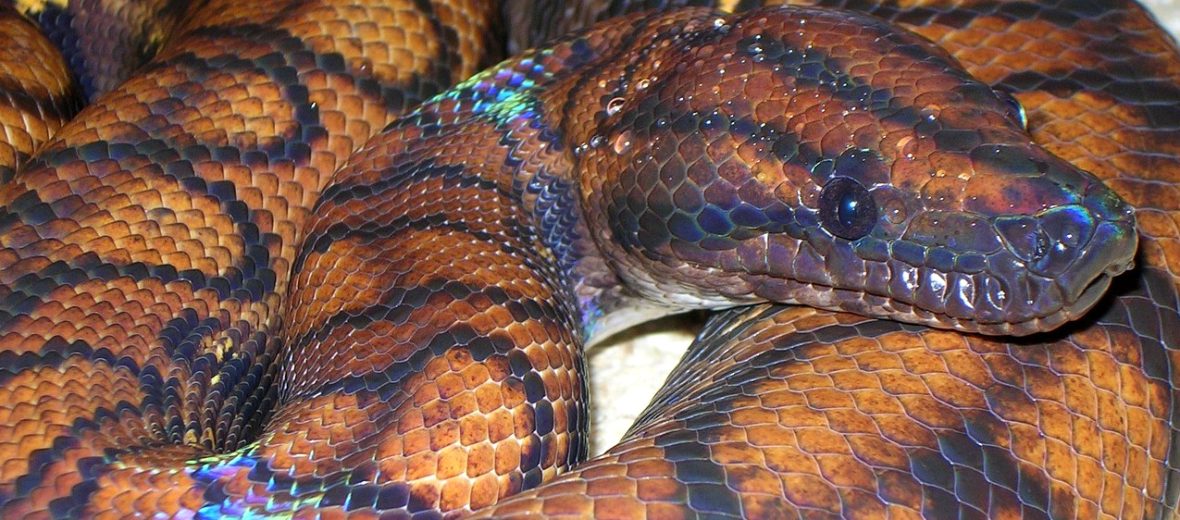
The rainbow boa, aka slender boa, can be found in Central and South America. They prefer rainforest habitats, and can also be found in open savannahs. These snakes are popular in the exotic pet trade, due to their beautiful appearance. There are 5 recognized subspecies of rainbow boa. These snakes face the threats of habitat destruction at the hands of agriculture, hunting, and trapping. But they currently have a stable population throughout their range and are listed as Least Concern by the IUCN.
First the Stats…
Scientific name: Epicrates cenchria
Weight: Up to 5 lbs.
Length: Up to 6 feet
Lifespan: Up to 20 years
Now on to the Facts!
1.) A group of snakes is called a bed, den, knot, nest, or pit.
2.) These snakes are nocturnal (active at night) but will sometimes bask during the day, if night temps drop too low.
3.) Like other boas, the rainbow boa is solitary and only comes together to mate.
4.) Even though they can climb, these snakes prefer a terrestrial lifestyle, spending most of their time on the ground.
5.) They hunt utilizing the heat-sensing pits around their nose. This way they can hunt at night and pick up the thermal heat signatures of their prey.
But wait, there’s more on the rainbow boa!
6.) Rainbow boas prey on mice, rats, other smaller mammals, and ground dwelling birds.
7.) Like other snakes, they can swim just fine, but tend to only visit the waterline to drink or eat the occasional amphibian.
Did you know…?
Boa constrictors can exert up to 12 lbs. per square inch of squeeze pressure. And contrary to popular belief, they don’t suffocate their prey, they restrict blood flow in their prey to the heart and brain.
8.) Rainbows are polygynous (1 male mates with multiple females).
9.) Just like other boas, the female develops eggs in her body and when the eggs hatch, she gives birth to live young and then reabsorbs the calcium from the eggs.
10.) Females are gravid (pregnant) for up to 5 months and births up to 16 young.
Now a Short Rainbow Boa Video!
Be sure to share & comment below! Also, check out the Critter Science YouTube channel. Videos added regularly!
Want to suggest a critter for me to write about? Let me know here.



